Don't wanna be here? Send us removal request.
Text
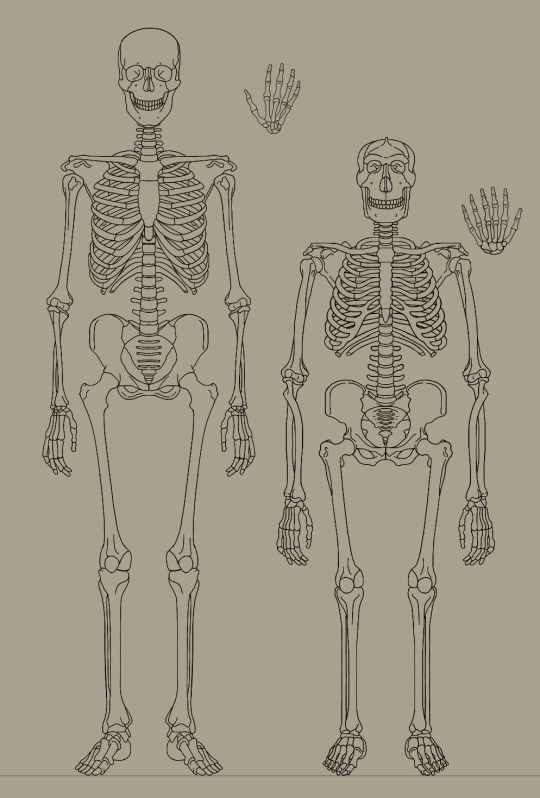
Around 430,000 BCE, roughly 1.7 million years after Paranthropus boisei was transported to a new world as part of an alien seeding project, Paranthropus xenosapiens appeared. Due to the increasing of their braincase, P. xenosapiens’ jaw strength declined and could no longer chew grasses as a fallback food. Instead of grasses, P. xenosapiens turned to hard grains and plant stems whenever food was scarce. Like humanity, P. xenosapiens existed in the Stone Age until they experienced their agricultural revolution around 12,000 BCE.
With the creation of villages came changes to social structures, the creation of languages, and the creation of traditions. While P. xenosapiens no longer lived in troops, the social structures inherited from P. boisei, all the way to Paranthropus xenorobustus, left an undeniable mark on the psyche of P. xenosapiens. Villages P. xenosapiens generally ranged from a hundred to a couple of hundred individuals on average. With the agricultural revolution came new techniques in tool crafting and the specialization of said techniques. The high-ranking males of P. xenorobustus troops were replaced by skilled craftsmen within the village.
These high-ranking craftsmen specialized in trades such as blacksmithing, tailoring, jewelry making, and architecture. Passing their techniques down to their sons patrilaterally, honing their crafts over generations. The better the craftsman, the more likely he would attract more females and have larger families, ensuring the passing down and further exploration of his techniques. Lower-ranking craftsmen, those who did not possess as good of skills or held jobs such as farmhands, sentinel watchers, butchers, and miners, were most often monogamous due to not attracting as many females. This new social system made it so lower-ranking families gather the materials that higher-ranking families would use to create something new.
This did not mean the lower-ranking families lacked creativity. Everything was an art to P. xenosapiens males, and everything they did was a way to show off their craftsmanship to females. Every farmworker would strive to breed better strains of grain, every butcher would devise every possible cut from an animal, and every sentinel would practice to wield their spear faster. Every P. xenosapiens male would attempt to leave his mark with personal mementos and intricate patterns on his tools and homes; the more intricate and aesthetically pleasing they looked, the more likely a female would notice. The villages revered innovation and any low-ranking male who was able to invent a new technique or demonstrate skill as a craftsman could catch the attention of other, higher-ranking craftsmen and females, thereby elevating their status within the village and attracting more females.
Due to the hyperfocus on craftsmanship P. xenosapiens possessed, raw materials were revered and became the basis of many of P. xenosapiens beliefs. If any materials were used poorly in a male's crafts to impress a female, not only would it backfire as an insult to her, but also an insult to the raw materials themselves. Furthermore, although there were no more dominant males within the structure of P. xenosapiens villages, any male who was able to master every craft within a village was regarded as legendary, and their names were recorded in the histories of their villages.
The keepers of knowledge and tradition within P. xenosapiens villages were the females. Since the time of P. xenorobustus, females have kept the fires. They moved the troops from one seasonal home to another, passing down generational knowledge from mother to daughter within the troop. While female P. xenosapiens were still firekeepers, their role in villages had evolved. Over time, more and more generational knowledge was passed down as oral histories until they were recorded upon as pictographs on wooden, stone, and clay tablets. These tablets made it easier to preserve knowledge, traditions, and ceremonies, creating the first written languages. Due to this female P. xenosapiens were the organizers and males were the doers. Age became a sign of wisdom for both genders. Villages were often led by a council of older post-menopausal females, and older male craftsmen were well respected and looked up to by younger males.
While most professions within P. xenosapiens were gendered, the professions of being a healer or apothecaries weren’t. While healers could be both male and female, it was more common for them to be males while apothecaries were more likely to be female. In their ancestors, such as P. xenorobustus, both genders would help in caring for sick or injured troop members, but it was more common for that care to come from other males. This was due to the large population of wandering males and the close bonds they shared with each other. Should one male be injured, the rest of the wanderers would look after him, and the same would occur within the troop. Likewise, females would occasionally look after troop males, but mainly their sisters and family, due to the troop's social structure. With the troop structure eliminated within P. xenosapiens villages, care for the injured became more widespread and was provided by both parties. Male healers tended to be skilled in practical matters, while female healers tended to be more book-smart due to the records they kept within the village.
Food such as grains, crops, and meat brought in by the males of the village was cooked by the fire-keeping females either within personal kitchens or communal ones. Sometimes, males also cooked their own meals, especially if they are single or living outside the village. Clothing within the village was made by males due to their eye for design, which the females generally lacked. However, females often showed off by wearing what males had made for them for courtship or as mates. Males also wore jewelry or trinkets they had made to show off their crafting skills, and to catch the eyes of a female. Courting a female P. xenosapiens could be difficult for males due to the gender imbalance still present within their species. While it was much better than in P. xenorobustus, with 11 females per 14 males instead of 9 females per 14 males previously, many single P. xenosapiens could still feel the urge to wander, like their ancestors. These wandering males would venture into unknown lands, hoping to join another village to court an available female and expand their skills, or die tragically in the wilderness.
#art#artwork#digital art#drawing#illustration#creature art#creature design#creature#fantasy art#fantasy creature#fantasy world#science fantasy#fantasy#skeleton art#skeleton#skull art#skull#lineart#anatomy#human anatomy#artist#my art#my artwork#speculative ecology#speculative biology#sketches#science fiction#scifi#sketch#sci fi and fantasy
6 notes
·
View notes
Text
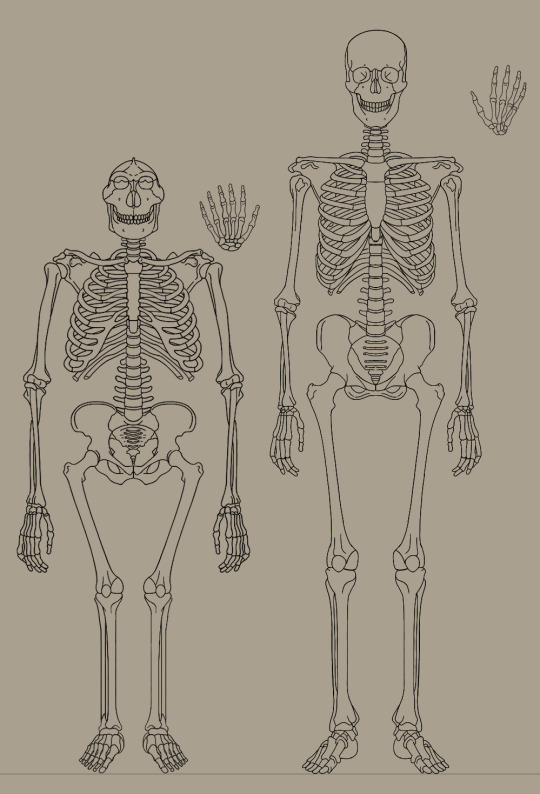
Around 1 million years ago, Paranthropus xenorobustus first appeared on the planet their ancestors, P. boisei, had been transported to as part of an alien seeding project 2.1 million years ago. By this time, the central polydactyly, which was present in their direct ancestors, P. xenos, had also occurred in their feet.
Due to the shrinking of the cheekbones and the enlarging of the braincase, P. xenorobustus could no longer efficiently chew on grasses as a fallback food. Instead, P. xenorobustus ate hard nuts and seeds as a fallback food over tougher-to-chew grasses, with their weaker yet still strong bite. While still using stone tools like their ancestors, P. xenorobustus now had a mastery over fire and the creation of simple structures.
The troops of P. xenorobustus were nomadic, moving from one seasonal home to another in troops ranging from a few dozen at their smallest to a few hundred at their largest. Each troop is led by a dominant male who secures his position through strength, alliances, social skills, and craftsmanship. Dominant males share and hone their craft with the rest of the troop to both secure their positions within the troop and to increase food acquisition with better-made tools.
In some instances, dominant males will invent new stone tools to either grind or capture new food sources, such as fish. Higher-ranking males also help the dominant male experiment with building different housing structures out of sticks, grasses, and stones from their environment to determine which techniques work best. Lower-ranking males often help and observe the higher-ranking males to form alliances with each other and leave the troop as a group or overthrow the dominant male and his allies.
Within the troop, low-ranking P. xenorobustus males have the highest mortality rates due to their forced location at the troop's outskirts, where they must forage the farthest, making them act as sentries and easy targets for predators. Unlike their ancestors, P. boisei and P. xenos, who had 4 females for every 15 males, Xenorobustus had 9 females for every 15 males in their population. This increase in the surviving female population is likely due to the availability of structures and fire.
Unlike in P. boisei and P. xenos troops, P. xenorobustus females play a much more active role within the troop than before. High-ranking female P. xenorobustus create and maintain the fires of the troop, and low-ranking females forage to secure the fuel for the fires. Only high-ranking females are allowed to create fire, and any low-ranking females caught making or attempting to make fire will be chased and bullied by higher-ranking females. Due to the risk of drawing the ire of higher-ranking females, many lower-ranking females will never attempt to make fire; however, those who do are often the ones who leave the troop to found their own, often with wandering males.
The ranks of female P. xenorobustus are inherited from their mothers. Females will work with their sisters and aunts to reinforce their position over lower-ranking female families by bullying them away from food and pushing them toward the outskirts of the troop, near the low-ranking males. Another advantage high-ranking females have over lower-ranking ones is their ability to mature quicker, produce more offspring, have better access to food, and the largest fires.
Besides firekeeping, female P. xenorobustus are also the keepers of generational knowledge within the troop. Female members within the troop keep track of seasonal changes and relocate their troop to the next seasonal settlement with the onset of each new season. The paths the troop takes, the dangers and resting spots, and the locations of each settlement are passed from mother to daughter, helping to ensure the troop's longevity. Generational knowledge isn't passed down through male members of the troop because all the young males born into the troop are forced to leave upon maturation.
Wandering males from different regions will sometimes meet and coalesce, sharing and exchanging their knowledge and thus spreading techniques across different regions. This knowledge shared between males isn't generational like it is with females, though, as females generally stay within their birth troop to pass down their knowledge. Furthermore, the males in the troop can be replaced by wandering males in bloody conflicts if the established males can't scare off the wanderers quickly. These fights only end when one party flees or is completely wiped out.
#art#artwork#digital art#drawing#illustration#creature art#creature design#creature#fantasy art#monster design#fantasy creature#fantasy world#science fantasy#fantasy#artist#anatomy#my art#my artwork#my post#digital 2d#digital illustration#digital drawing#digitalart#skeleton art#skeleton#skull art#skull#speculative ecology#speculative biology#speculative zoology
9 notes
·
View notes
Text
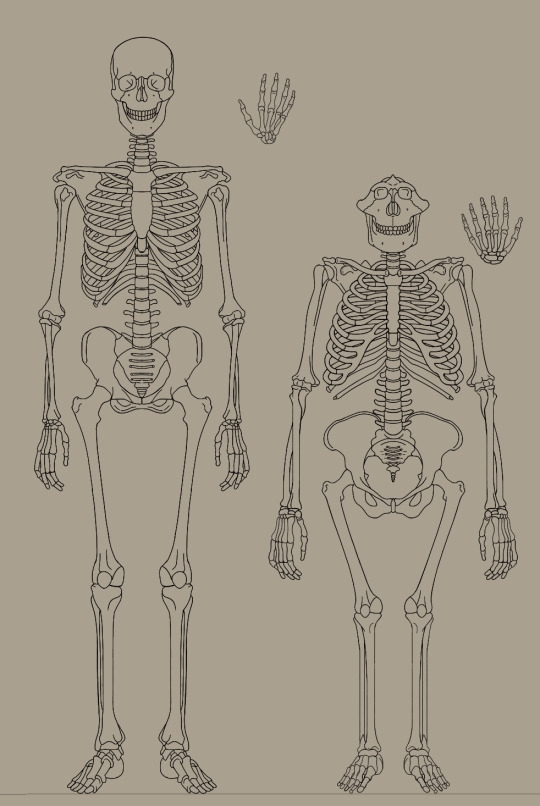
Around 1.8 million years ago, Paranthropus Xenos first appeared on the planet their ancestors, Paranthropus Boisei, had been transported to as part of an alien seeding project 2.1 million years ago. Due to the founder effect, Xenos rapidly adapted to their new environment due to genetic drift and the central polydactyly present within several males became widespread in subsequent generations.
While still eating grasses as a fallback food when food became scarce, Xenos expanded its diet to include more meat and bone marrow through the use of more advanced tools than their ancestors. Xenos share the same social structure as Boisei troops with troops ranging from a few dozen to over a hundred in size. Each troops is lead by a dominant male who secures their position in the troop through strength, alliances, social skills, and craftsmanship. Dominant male Xenos spend their time honing their craft of stone tool making to create the best tools to secure and process different foods. At the same time, the dominant males will teach other males how to make tools to form and maintain alliances within the troop. Lower ranking males who wish to attempt climbing to a higher rank within the troop will hone their craftsmanship and form alliances before trying to overthrow the dominant male and his allies.
Within the troop, the males with the highest mortality rate are the lowest ranking males. Due to the large disparity between males and female Xenos like their ancestors Boisei (4 females for every 15 males) low ranking males are pushed to the outskirts of the troop. Forcing them to be the sentries of the troop for survival since they are more easy pickings for predators stalking the troop.
Like with Boisei, female Xenos within a troop have their own social structure with high-ranking females and low-ranking females. The ranking of each female within the troop is inherited from their mother and greatly affects their quality of life. High-ranking females are able to mature more quickly, produce more offspring, and have better access to food than lower-ranking females. Females work together with their aunts and sisters to reinforce their position within the troop by bullying lower-ranking families from food and resting spots. Sometimes instead of staying within the troop like most females, families of lower-ranking females will leave the troop in order to find males to start a new troop with, securing themselves a high-ranking position within it. Unlike female Xenos who rarely leave the troop, all male Xenos born within the troop will be forced to leave by the older males and be forced to wander. These males will seek to find wandering females to start a new troop or will band together and attempt to take over an existing one. If not scared off initially by the troops males, the two groups will engage in a bloody fight using their tools to kill and maim each other until one side either retreats or is completely wiped out by the other.
#art#artwork#digital art#drawing#illustration#creature art#creature design#creature#fantasy art#monster design#artist#my art#clip studio illustration#illustrative art#digital 2d#digital illustration#digital drawing#digitalart#digital painting#skeleton art#skeleton#animal skull#skull art#skull#lineart#fantasy worldbuilding#fantasy world#worldbuilding#fantasy creature#science fantasy
8 notes
·
View notes
Text
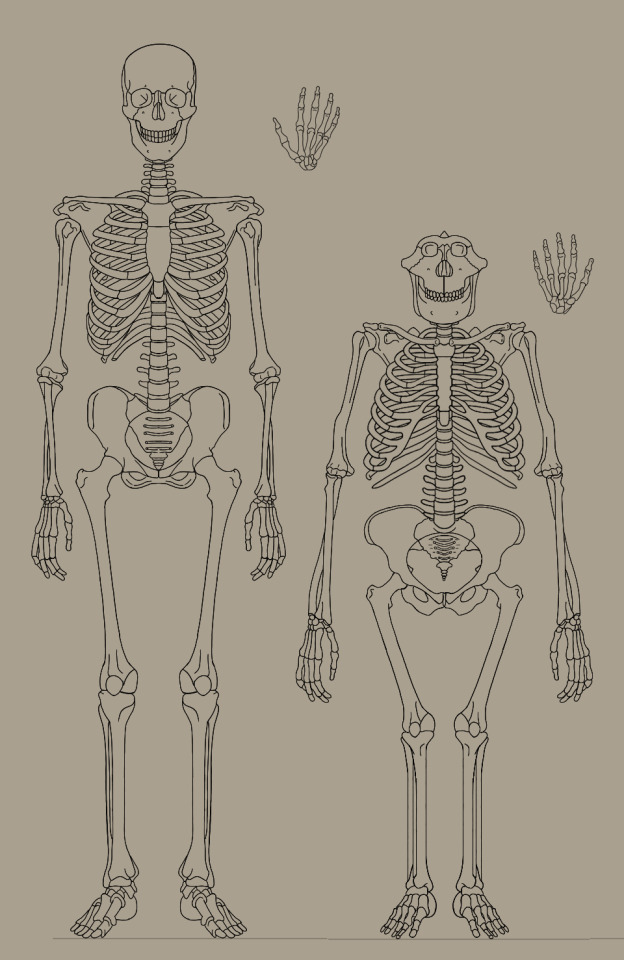
Paranthropus boisei belongs to a sister group of hominids to the entirety of the homo lineage which lead to the evolution of humans. While both descended from a member of the Australopithecus lineage, paranthropuses were more robustly built in the jaws with large molars able to eat grasses; homo was more gracile in their jaws and skulls. On Earth, all species of Paranthropus went extinct in East and South Africa around 1.2 million years ago. However, this was not the case for any specimens who were off-world.
Around 2.1 million years ago, an alien race abducted a population of Paranthropus boisei along with other eastern African wildlife as part of a seeding project to spread compatible biospheres throughout the Orion arm of the Milky Way. These individuals found themselves in a similar habitat to their home, a large forest bordering a vast savannah on their new planet.
Besides their ability to eat grasses as a fallback food to survive, the complex social structures of Paranthropus boisei helped them adapt to their new environment. Similar to baboons, Boisei lived in multi-level groups with dominant hierarchies present in both the male and female parts of the troop. Every Boisei troop varies in size, ranging from a few dozen individuals to over a hundred, and is led by a single dominant male. Each dominant male secures their position in the troop through strength, alliances, social skills, and craftsmanship.
Dominant male Boisei is often the best at crafting stone tools and helps secure their position within the troop by teaching other males how to make tools and form alliances. The better quality of the stone tools, the easier it is to cut grass, crack open bones, and secure food resources for the entire troop, leading to overall survivability and fitness. Males of lower rank (those who are not immediate allies of the dominant male) may want to hone their skills to secure more food and form their own alliances in an attempt to overthrow the dominant male and his allies.
Moving up ranks in the troop not only helps secure breeding rights with female members of the troop but also for safety reasons. Due to the immense disparity in the number of males and females among the boisei (with 4 females to every 15 males), lower-ranking males of the troop live on the outside of the group and act as sentries to look out for any predators and dangers. Making lower-ranking males the most likely to be killed over females and higher-ranking males.
Female Boisei within a troop have their own social structure, which they inherit from their mothers. High-ranking females are able to mature more quickly, produce more offspring, and have better access to food than lower-ranking females. Females in the troop help to reinforce their position within the troop by working with their mothers and sisters to bully lower ranking families away from food and resting positions. While females normally don’t leave the troops they are born in, lower-ranking females may disperse from a troop to found a new one to secure a higher-ranking position. Similarly young males born in a troop are pushed out by the older males are forced to wander to either found a new troop or take over an existing one. Attempts to take over a troop by wandering males will turn bloody if the established troop is not able to scare off the invading males. These fights are always gruesome as both sides will use their stone tools to injure and kill the other until one side flees or is completely killed.
#art#digital art#artwork#drawing#illustration#creature art#creature design#creature#fantasy art#fantasy creature#fantasy world#science fantasy#fantasy#scifi#science fiction#fantasy race#alternate timeline#alternate universe#skeleton art#skeleton#skull art#skull#anatomy#lineart#my art#digital 2d#digitalart#digital drawing#digital illustration#clip studio illustration
7 notes
·
View notes
Text
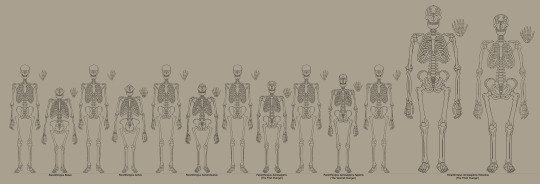
A lineup of skeletons I did for a friend's worldbuilding project whose race makes an appearance within mine. The goal was to create a plausible alien human without said alien not being a member of homo in any way.
Around 2.1 million years ago, an alien race abducted a population of Paranthropus boisei along with other eastern African wildlife as part of a seeding project to spread compatible biospheres throughout the Orion arm of the Milky Way. Over 2.1 million years, Paranthropus would become closer to their namesake, their name meaning "near or beside man," as they would convergently evolve human traits due to being subject to similar evolutionary pressures in their new world.
Paranthropus Xenosapiens (the First Dvergar) were the first to build complex civilizations, focusing on artistry and craftsmanship due to a history of male coalitions working together to produce works that impressed the much smaller female population. As their technology advanced and they became increasingly reliant on it, their bodies gradually became taller and lankier as they spread out into the stars, eventually evolving into Xenosapiens Sapiens (the Second Dvergar).
The Second Dvergar were so reliant on technology that every newborn was outfitted with a neural implant on the forehead, which would help them interface with the machines and technology around them. As their bodies grew weaker and weaker due to their reliance on technology, a heretical group within their empire experimented with genetic engineering to create a new strain of their race, aiming to achieve an apotheosis of what they had become.
Xenosapiens Robustus (the Third Dvergar) would be strong where their creators were frail and meant to innherit the legacy of a slowly fading people. After a civil war between the heretical group and the rest of the empire led to their extinction, The Third Dvergar inherited the fallen empire of their creators and now spread their dominion over ever more solar systems and species.
#art#artwork#digital art#illustration#drawing#creature art#creature design#creature#fantasy art#fantasy world#fantasy#science fantasy#fantasy race#fantasy worldbuilding#worldbuilding#skeleton art#skeleton#lineup#height chart#skull art#skull#scifi#sci fi and fantasy#science fiction#scifiart#artist#my art#evolution#speculative ecology#speculative biology
14 notes
·
View notes
Text
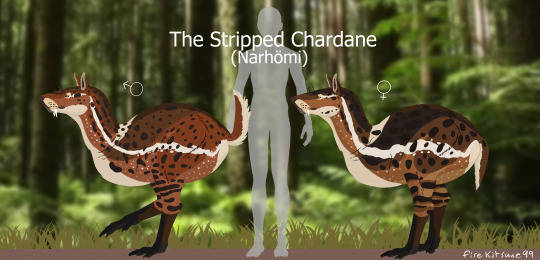
Old art of a non human sophont on Atterra. They are recently going through a revamp to make their anatomy more in line with mammals and to explore their unique leg anatomy. Chardanes have difficulty speaking any human tongues due to their vocal chords and while they can mimic sounds and human speech, holding conversations is difficult so many just communicate through writing with humans.
#art#artwork#digital art#drawing#illustration#creature art#creature design#creature#monster design#fantasy art#fantasy creature#fantasy world#science fantasy#fantasy#creature drawing#creative design#creatures#artist#my art#illustrator#illustrative art#clip studio illustration#clip studio art#clip studio paint#clip studio pro#digital 2d#digitalart#digital drawing#digital painting#digital illustration
11 notes
·
View notes
Text
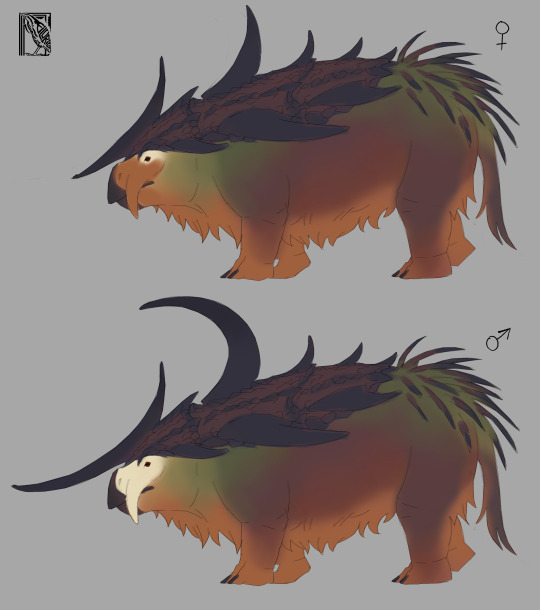

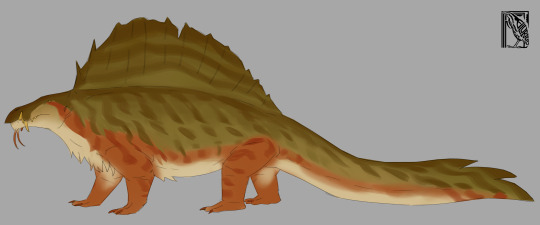
more funny creaturas for funs for the Sillyworld. again this Sillyworld is still very vague in my mind and i am Not thinking too hard about the Plausibility just vague things... the first two im imagining are not present in PteroContinent Forests but in more open areas, last guy obviously is a water chilling guy. Will ponder more but it feels easier to ponder the more little spingles i throw in there
517 notes
·
View notes
Text
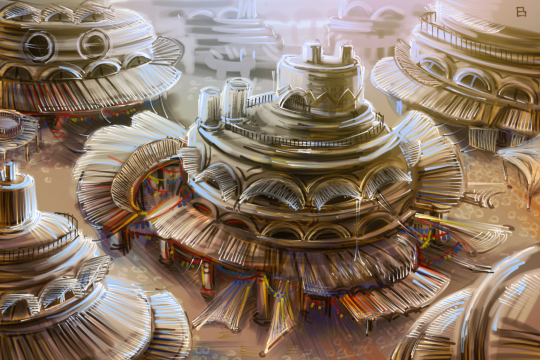
I tried drawing a Tharr settlement. They actually like to make the purely residental areas of their cities more decorative and interesting visually with their characteristic, sometimes circular buildings.
179 notes
·
View notes
Text

A revamp of the skulls I posted not to long ago. Unfortunately once I posted the skulls a friend of mine pointed out all the mistakes I made when proportioning the skulls so I had to go back and redo them. Thankfully they look even better than before!
Around 2.1 million years ago, an alien race abducted a population of Paranthropus Bosei along with other eastern African wildlife as part of a seeding project to spread compatible biospheres throughout the Orion arm of the Milky Way. Over 2.1 million years, the Paranthropus would become closer to their namesake, their name meaning near or beside man, as they would convergently evolve human traits due to being subject to similar evolutionary pressures on their new world.
#art#artwork#digital art#drawing#illustration#creature art#creature design#creature#fantasy worldbuilding#fantasy creature#fantasy world#science fantasy#fantasy art#fantasy#skull art#skull#speculative ecology#speculative biology#speculative zoology#speculative evolution#spec evo#xenobiology#specbio#alien species#fantasy race#giant#skeleton#skeleton art
16 notes
·
View notes
Text
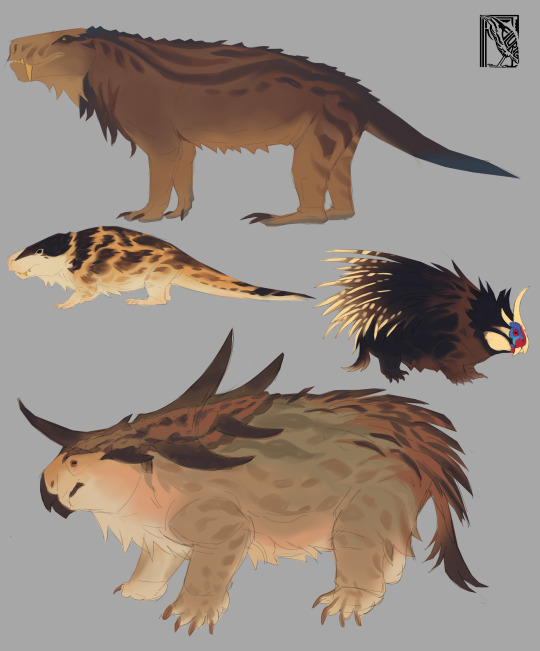
some more sillyworld doodles of probable "therapsids" present in a certain part of the world. i think in most of the continents on the Sillyworld Planet "primitive" therapsids died out except on the northwestern continent (name TBA), where they're the most predominant "mammals".
614 notes
·
View notes
Text
Can you tell which is my weaker side at the end there? 😂
If this made you think “I need some art references for drawing archer muscles”, Patreon has you covered!
5K notes
·
View notes
Text

Etadinii priest (cult of Inyamache) standing near the serpent stone, a megalithic structure predating any historical record. Contrary to first impressions and occasional jesting, this is almost definitely not a giant penis (though Some level of symbolic phallic intent is possible), and was probably shaped to cast a long shadow resembling the head and neck of a snake.
Its location is within the present-day province of Wardin adjacent to the city Jaesai, close to the border of Ephennos. A temple to Inyamache was built around it three centuries ago and greatly expanded within the past century, though the stone and the majority of the associated site remains intact.
It is most likely at least couple thousand years old, long predating the written record and having only hazy and conflicting accounts in different oral histories. Most of its original features have been worn away by erosion, but petrogylphs of a snake and rows of scimitar deer (locally extinct or possibly never extant in this area), gazelle, and aurochs remain visible (and may have been re-carved at various points in history), and there are traces of concentric rings at the 'head'. 21st century level analysis would also find traces of ochre within the lines of the petroglyphs, which were painted and repainted red for at least a couple centuries after its creation.
This is the largest single prehistoric megalithic structure located within present day Imperial Wardin (unless burial cairns constructed over slab tombs are counted) and its existence is very technically impressive, especially given the nearest possible quarry is about 50 miles away. The builders of the site were almost certainly a fairly small society of nomadic pastoralists, so the diversion of time and manpower to the quarrying and movement of this stone (and others on the site) would have been absolutely exceptional. Most similar structures from the era are significantly smaller (about human height) and found closer to quarry sources.
The stone is part of a larger site that was mostly or entirely constructed in the same period. It stands adjacent to a shallow, rounded manmade pit buffered from erosion with brick walls, encircled by smaller horizontal slabs. A single circular slab is placed in the center, which is currently referred to as the sun stone. A nearby arroyo also shows signs of modification from the same period (beyond typical redirections for irrigation), diverting any potential floodwaters away from the site to prevent inundation of the pit.
The primary purpose of this stone and the site itself is recording the winter solstice. During the solstice sunset, the snake's cast shadow approaches and perfectly engulfs the circular slab at the center, appearing to devour it. The notion that the sun is eaten by a snake (either on the winter solstice, during total eclipses, or both) appears to have been a common thread in religious belief in the region. This notion is no longer held in the Wardi sphere (the night of the solstice is the sun's yearly death and total eclipses are a concerning premature and unnatural death) but still has linguistic traces, particularly in the word for total solar eclipses being a compound form of the phrase 'swallowed sun'.
Ownership of the site has changed hands numerous times over its history, but it has been in near-continuous use by all its owners as a place to observe the winter solstice and perform related rites. Virtually all proto-Wardi monotheist animist worldviews cast the sun (or sun + sky) as God and/or the source from which all beings emanate, and most considered the winter solstice to be an exceptionally significant (and potentially dangerous) moment in the year, as the time of the sun's dying and subsequent rebirth.
Within the faith of the 7-faced god, veneration of God has shifted to focus more upon the earth (with the sun as an Extension of the earth, all parts of God's body) but the winter solstice still retains extreme religious significance- it's used in part to determine the date of the new year (which occurs on the first new Nyaram moon on or after the solstice), and is still recognized as the moment of the sun's death.
The state cult of Inyamache currently maintains this site as part of the temple grounds and uses it to measure the winter solstice in the same capacity it has for millennia, using the total engulfment of the sun stone as the signal to begin their most important rites of the year. It is understood that it's at least Possible that the sun could fail to rise the next morning if proper action is not taken to ensure its rebirth.
The serpent stone stands in contrast to the brightly plastered and painted temple (and the other prehistoric slabs on-site that have received this treatment) in remaining unaltered in the modern era. The state cult holds that the serpent stone and its associated site was created by the first men, and considers the location and the serpent stone itself to be sacred and regulated by taboo. The only people permitted to enter the site and touch the stone are Etadinii priests (who cleanse it with water once per solar month). Solar eclipses (and subsequent misfortunes attributed to them) are occasionally blamed on trespassers.
122 notes
·
View notes
Text

Portrait of an old raider from the Valley of Two-Sky River. Birrin eyestalks regenerate unless deeply (or deliberately) damaged...
Life is not easy in the ashes.
836 notes
·
View notes
Text

A lineup of skulls I did for a friend's worldbuilding project whose race makes an appearance within mine. The goal was to create a plausible alien human without said alien not being a member of homo in any way.
Around 2.1 million years ago, an alien race abducted a population of Paranthropus Bosei along with other eastern African wildlife as part of a seeding project to spread compatible biospheres throughout the Orion arm of the Milky Way. Over 2.1 million years, the Paranthropus would become closer to their namesake, their name meaning near or beside man, as they would convergently evolve human traits due to being subject to similar evolutionary pressures on their new world.
#art#artwork#digital art#drawing#illustration#creature design#skeleton art#skeleton#skull art#skull#fantasy worldbuilding#fantasy world#worldbuilding#creature art#alien species#science fantasy#fantasy art#fantasy#evolution#speculative ecology#speculative biology#speculative zoology#spec evo#speculative evolution
12 notes
·
View notes
Text
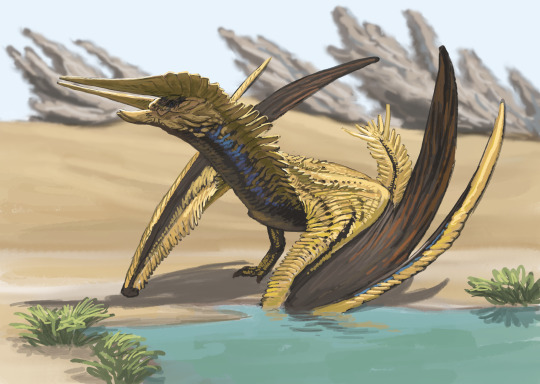

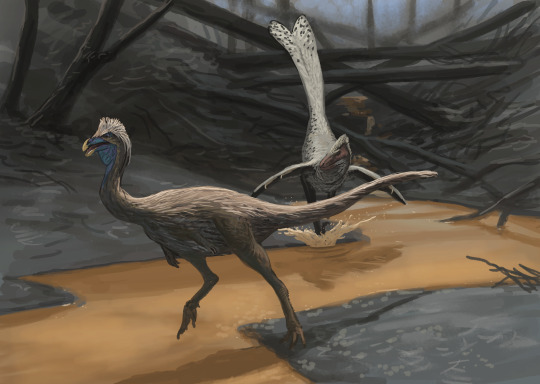


Results from the #paleostream!
Rey Dau (a wish), Vectiraptor (hunting Thecocoelurus), Thalattosaurus and Homunculus.
816 notes
·
View notes
Text
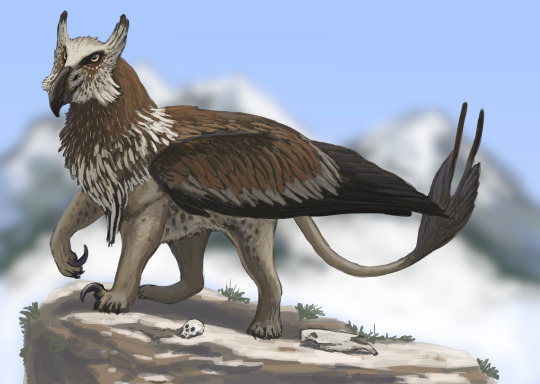
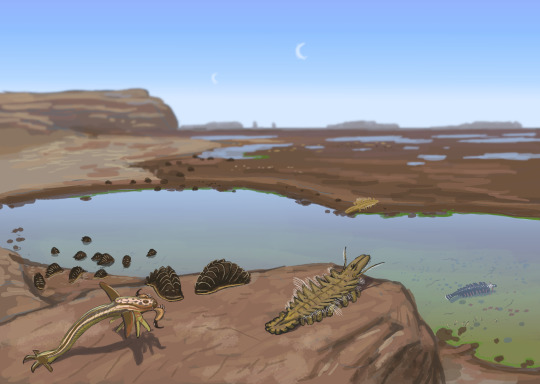
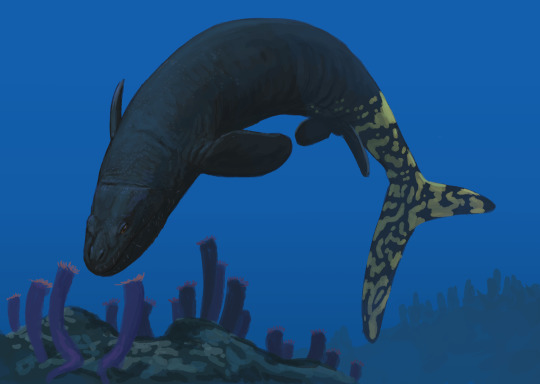
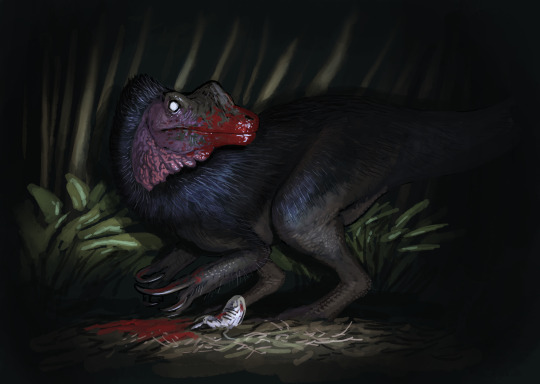
On tonight's #paleostream I did a bunch of wishes for buyers of my books!
A griffin, Aliens doing their first steps on land, a spec evo mosasaur from Lemuria and the "slasher" from Terra Nova, a redesign.
If YOU got you hands on one of my books (3 out so far) and post about it you can
554 notes
·
View notes
Text
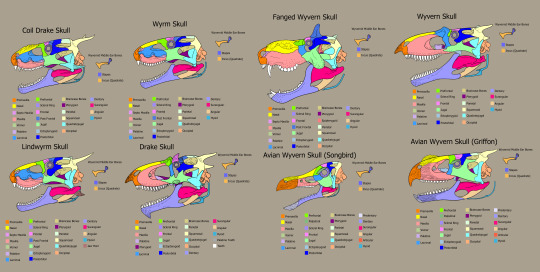
Colored anatomy lineart for Wyvernid skulls. Each of these skulls represents a 'generic' look at each type of wyvernid and helps showcase the unique skull anatomy of these stem reptiles.
#art#artwork#digital art#drawing#illustration#creature#creature design#creature art#monster design#monsters#monster art#monster#creature drawing#creative design#creatures#speculative ecology#speculative biology#speculative zoology#fantasy art#artist#my art#clip studio illustration#illustrator#my artwork#my post#fantasy creature#fantasy world#science fantasy#fantasy#speculative evolution
42 notes
·
View notes